Indulge in this nutrition-packed, homemade banana ice cream recipe. Discover the perfect blend of natural sweetness and creaminess in every scoop.
Bananas are a natural powerhouse of goodness and flavour. They’re one of nature’s self-contained, portable, and ready-to-eat gifts.
It makes perfect sense to use this gift from nature to create a Creamy, Nutritious, and Delicious Homemade Banana Ice Cream!
In this article, we’ll detail some history about bananas, and their incredible health benefits, and of course, we’ll take you through step-by-step to learn how you can make your own homemade Banana ice cream that’s both nutritious and delicious.
We’ll also share a recipe and method for a Mango Coulis that you can swirl into your homemade banana ice cream for added flavour and a vibrant ripple effect.
If you’d rather, you can scroll to the end of this article and go straight to the recipes we’ve shared, or click the jump to recipe links.
Let’s find out more about Bananas, their origins, their health benefits, and how we can use them in our homemade ice creams.
Origins of Bananas
Bananas have a long and interesting history that goes back centuries. They’re thought to have come from Papua New Guinea in Oceania, and people in ancient times really liked them because of their nourishing qualities and their portability.
As time went on, bananas travelled along trade routes and ended up in different parts of the world, becoming a major part of many cultures’ diets. European explorers played big a role in bringing bananas to the Americas. Today, we have many different types of bananas, thanks to a long journey from far-off places.
This not only shows how much people enjoy eating bananas, but it also has a lot to do with our culture and history.
Nature’s Powerhouses
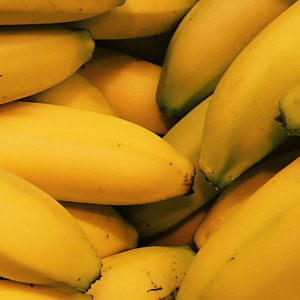 Bananas, often celebrated for their creamy taste profile, also stand as one of nature’s powerhouses, full of nutrition and vitality.
Bananas, often celebrated for their creamy taste profile, also stand as one of nature’s powerhouses, full of nutrition and vitality.
Bananas are packed with good stuff. Packed with natural sugars like glucose, fructose, and sucrose, which give you a quick energy boost.
Plus, they’re full of potassium, a vital electrolyte that supports proper heart and muscle function, while helping to regulate blood pressure.
Bananas also contain fibre that’s good for your digestion, promoting a healthy gut and an array of vitamins and minerals like vitamin C, vitamin B6, and manganese that are good for your overall health.
But that’s not all! Bananas contain antioxidants that combat oxidative stress and help keep your skin looking young and fresh.
You can eat them as a quick snack, blend them into smoothies, or even turn them into delicious homemade banana ice cream. So, they not only taste good but also do good things for your body.
Bananas and Ice Cream
Bananas are incredibly versatile and are a staple in the dessert world, gracing many recipes and well-known desserts. Turning them into delicious homemade banana ice cream is a healthy method to enjoy them even more.
This frozen treat is filled with important nutrients like potassium, vitamin C, and dietary fibre, making it a guilt-free option that pleases your taste buds and supports your health.
Whether you prefer a traditional banana taste or want to try fun additions, making banana ice cream lets you get creative in the kitchen, providing both deliciousness and wellness.
Here’s our easy-to-follow, simple recipe and method for making your very own Homemade Banana Ice Cream. This Ice Cream method uses no egg and no churn methods.
Homemade Banana Ice Cream Recipe
Ingredients:
- 4 ripe bananas (peeled, sliced, and frozen)
- 1-2 tablespoons honey or maple syrup (adjust to taste)
- 1 teaspoon vanilla extract (optional)
- A pinch of salt (optional)
- Natural colouring (optional) Please see our article What Equipment Do You Need to make Homemade Ice Cream which explains the use of colourings for ice creams that may not turn out the colour we might expect.
- Optional mix-ins: chopped nuts, chocolate chips, or a swirl of peanut butter
Instructions:
- Start by slicing ripe bananas into small rounds. Place the banana slices in a single layer on a parchment paper-lined tray or plate. Make sure they are not touching each other. Freeze the banana slices for at least 2-3 hours, or until they are frozen solid.
- Once the banana slices are frozen, transfer them to a blender or food processor. Add honey or maple syrup, vanilla extract, and a pinch of salt if using. Your chosen sweetener and vanilla extract can be adjusted according to your taste preference.
- Blend the frozen banana slices until they start to break down. You may need to stop and scrape down the sides of the blender or food processor a few times.
- As you continue blending, the banana mixture will transform into a creamy and smooth consistency resembling soft-serve ice cream. This may take a few minutes, so be patient.
- If you wish to add any mix-ins, such as chopped nuts, chocolate chips, or a swirl of peanut butter, you can fold them into the banana ice cream once it reaches the desired consistency.
- Once the banana ice cream is creamy and smooth, you can either serve it immediately as soft-serve or transfer it to a lidded container and freeze it for an additional 1-2 hours for a firmer texture.
- When ready to serve, scoop the banana ice cream into bowls or cones. You can garnish with additional toppings, such as fresh fruit or a drizzle of honey if desired.
- Enjoy your homemade eggless banana ice cream immediately!
 We tend to use bananas when they are browning as we find this is when they are at their sweetest and therefore require very little added sweeteners, if any, as you are taking full advantage of the natural sweetness of ripe bananas, not only that our recipe also uses fruits that ordinarily might be disposed of.
We tend to use bananas when they are browning as we find this is when they are at their sweetest and therefore require very little added sweeteners, if any, as you are taking full advantage of the natural sweetness of ripe bananas, not only that our recipe also uses fruits that ordinarily might be disposed of.
This method also makes this homemade banana ice cream a perfect treat for those who are looking for a dairy-free and egg-free option.
Feel free to get creative with your mix-ins and toppings to customise your banana ice cream to your personal preferences.
Mango Coulis Recipe
Why not add a Mango Coulis to create Banana Mango Ripple Ice Cream? Mangoes add a vibrant tropical flavour that compliments the creaminess of Bananas beautifully. A mango coulis would add a burst of sunshine to your homemade banana ice cream.
Here’s our recipe and method for creating a Mango Coulis to swirl into your Homemade Banana Ice Cream
Ingredients:
- 2 ripe mangoes, peeled and diced
- 2 tablespoons granulated sugar
- 1 tablespoon freshly squeezed lemon juice
- 50ml water
Method:
- In a small saucepan, combine the diced mangoes, granulated sugar, lemon juice, and water.
- Place the saucepan over medium heat and bring the mixture to a gentle simmer, stirring occasionally to dissolve the sugar.
- Once the mixture reaches a simmer, reduce the heat to low and let it simmer gently for about 10-15 minutes, or until the mangoes are soft and the mixture has thickened slightly.
- Remove the saucepan from the heat and let the mango mixture cool for a few minutes.
- Transfer the mixture to a blender or food processor and blend until smooth.
- If desired, strain the coulis through a fine mesh sieve to remove any fibrous bits.
- Allow the coulis to cool completely before using it as a ripple in your homemade banana ice cream.
- Store any leftover coulis in an airtight container in the refrigerator for up to 1 week.
Serving Suggestions:
- Spoon the mango coulis over scoops of homemade banana ice cream.
- Swirl the coulis into the banana ice cream before freezing for a marbled effect.
- Use the mango coulis as a topping for pancakes, waffles, or cheesecake.
- Drizzle the coulis over fresh fruit salad or yoghurt for a tropical twist.
Consider Some Other Delicious Ripple Flavours for Your Homemade Banana Ice Cream
When it comes to creating a tantalising ripple effect in your homemade banana ice cream, the options are endless. While a mango coulis would certainly be a fantastic choice, there are several other flavours that pair beautifully with bananas. Here are some alternatives to consider:
- Strawberry: The classic combination of strawberry and banana is always a crowd-pleaser. The sweetness of strawberries enhances the tropical flavour of bananas, creating a refreshing and summery ripple.
- Raspberry: The tartness of raspberries would contrast nicely with the natural sweetness of bananas, creating a deliciously balanced ripple effect
- Passionfruit: Tangy and tropical, passionfruit adds a zesty twist to banana ice cream. A passionfruit coulis would provide a refreshing contrast to the sweetness of the bananas, creating a unique and exotic flavour profile.
- Coconut: Coconut and banana are a match made in dessert heaven. The creamy richness of coconut pairs perfectly with the tropical flavour of bananas, creating a decadent and indulgent ripple effect.
- Chocolate: For chocolate lovers, a chocolate ripple would be a delicious and rich addition to banana ice cream. The rich and indulgent flavour of chocolate complements the natural sweetness of bananas, creating a heavenly combination.
Here Are Some Did You Know Facts About Bananas
- Berries, Not Trees: Despite their size, bananas are actually classified as berries, botanically speaking, because they grow from a single ovary.
- Bananas and DNA: Bananas share about 50% of their DNA with humans, making them a surprisingly close relative.
- Bananas Have Many Names: Bananas are known by different names in various cultures. In some countries, they’re called “plantains,” while in others, they’re known as “dessert bananas.” Although Plantain and Bananas are very similar, they are in fact two separate fruits.
- Nutrient Powerhouse: Bananas are rich in essential nutrients, including potassium, vitamin B6, vitamin C, and dietary fibre. They are also a good source of energy due to their natural sugars.
- Colours of Bananas: Bananas change colour as they ripen. They start green, then turn yellow, and eventually develop brown spots as they become fully ripe.
- Scientific name: The scientific name of most cultivated bananas are Musa acuminata, Musa balbisiana, and Musa × paradisiaca for the hybrid Musa acuminata × M. balbisiana, depending on their genomic constitution.
- Cavendish Dominance: The most commonly consumed banana variety is the Cavendish banana, named after Sir Henry Cavendish, a British scientist. It replaced the Gros Michel variety due to its resistance to a devastating fungal disease.
- Banana Republic: The term “banana republic” was coined in the early 20th century to describe countries with economies heavily dependent on exporting a single resource, such as bananas.
- Threatened Diversity: While the Cavendish is popular, there are over 1,000 varieties of bananas in different shapes, sizes, and colours. Many of these varieties face extinction due to diseases and monoculture farming.
- Slowing Ripening: To slow down the ripening process of bananas, you can store them away from other fruits. This is because bananas release ethylene gas, which accelerates the ripening of nearby fruits.
These fascinating facts shed light on the unique characteristics and significance of bananas in both nature and culture.
We hope you have enjoyed our article about Homemade Banana Ice cream, learning to make your own and also learning about banana’s incredible health benefits.
If you have any questions, please feel free to drop us a comment below. We would love to hear how you get on if you give this recipe a try, so please drop us a comment below.
Stay connected for endless homemade ice cream inspiration! Join us for mouthwatering recipes, expert tips, and exclusive updates. Follow us on Pinterest, Instagram, Facebook, and X by clicking on any of the social media icons below.












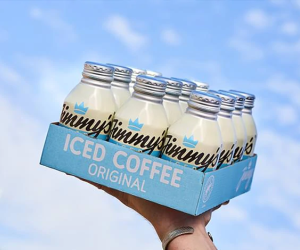





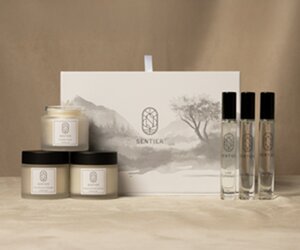




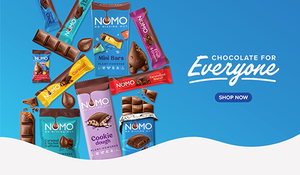







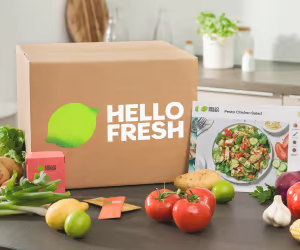


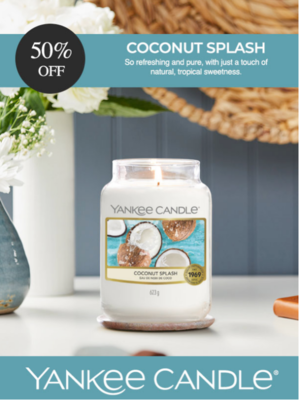


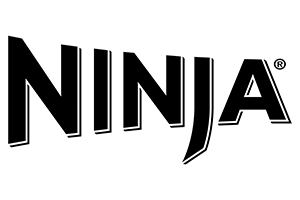


Hello Cherie,
This recipe sounds delicious, especially with these hot temperatures lately. Who knew that bananas came from Papua! Your article is very interesting because it is not only a recipe, but a source of information about bananas. Your choice of words make you want to continue reading. I also like that your recipe uses healthy ingredients, so I will be making this one soon. Have you tried using heavy cream too?
Hey Karidsa,
Thanks for your comment. Glad you enjoyed reading not only the recipe but also about the goodness and health benefits of Bananas too.
Yes, you absolutely can add Double cream / Heavy Cream to this recipe. Bananas are naturally already quite creamy in texture. Adding cream will enhance that, and make your ice cream richer!
Would love to know how you get on making yours, please drop us a comment when you do.
Cherie :o)